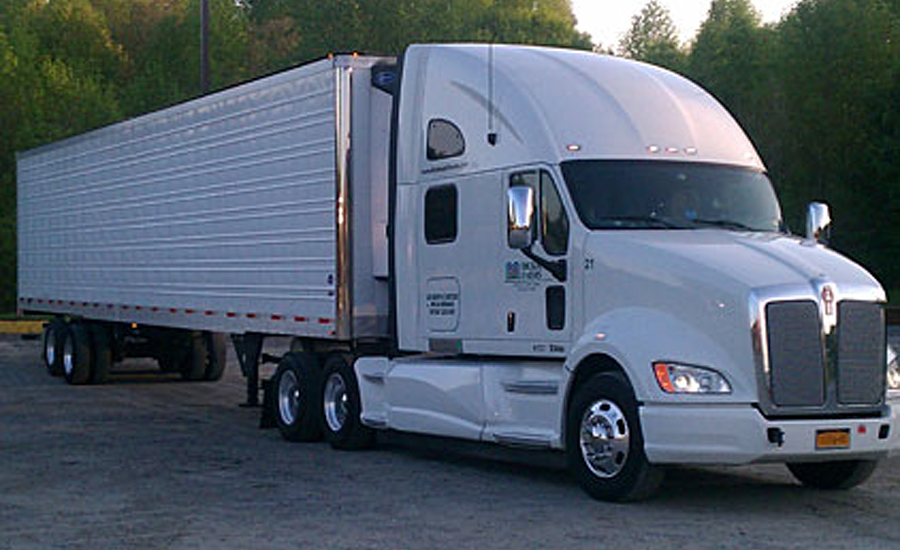Real Estate and the Frozen Food Industry

The trends in frozen foods logistics are changing. As fulfillment centers adapt to better suit customer demands, we see more automation, more office improvements, more levels of complexity, more security, higher building finishes and more employee workplace amenities, among others.
Leasing new property is an important part of growing or streamlining frozen food operations. From expanding into new markets to simplifying business activities for staff members or external customers, leasing decisions continuously present an important logistics challenge. With attention devoted to site and building selection, how a project is capitalized is often an overlooked driver of a deal’s economic structure.
For food companies, this is particularly important because the real estate process tends to require large capital contributions. When structured correctly, food processors can receive 100% funding of their capital improvements needs from the landlord.
The days of owning buildings for income and appreciation are gone. Commercial real estate ownership now rests with large institutional real estate investors who raise capital from insurance companies, pension fund advisors, university endowments, private individuals, real estate private equity firms and sovereign wealth funds. In fact, the Top 100 global institutional real estate investors firms own more than $2.1 trillion of valued real estate.
So, what does this change to institutional real estate ownership mean to the frozen food tenant? And, how does that compare to what it means to the landlord?
The usual real estate process starts with the corporate occupier identifying land sites that suit the operational needs of the project.
Once properties are determined, real estate developers work with a potential tenant to develop a proposal to build a facility that meets the potential tenant’s goals. These developers then make a lease proposal based on their costs and what they believe is market rent. Usually the tenant goes through a process to determine the right combination of site, building features and rent. Corporate occupiers then select the developer, sign a lease and occupy the building. The tenant typically uses a competitive request for proposal (RFP) and negotiating process to determine the most aggressive economics.
At this point, we need to define “cap rate,” defined as the annual net rent divided by the cost or value of the property. For example, an income of $100 in a building valued at $1,000 yields a cap rate of 10%.
In the past, when real estate investors held properties for the long term, the critical variable was the difference between the rent and the mortgage payment. Now that developers sell property, the critical variable is the difference between the cap rate on the cost of the property and the cap rate that the investor will pay for the property.
In the example above, if an investor can live with a 5% return, then the $100 of rent yields a value of $2,000 and the owner can sell the property for a large profit. This concept is known as the cap rate on cost vs. the cap rate on sale. When the cap rate on cost is greater than the cap rate on sale, the investor can flip the property to an investor and make a profit.
Today, market investors are looking for a 5% cap rate. Developers want to lease a property for a 6% cap rate and see a profit when they sell the building. In the $100 annual rent example above, the investor has a 6% cap rate, meaning his/her cost is $1,667.Selling at a 5% cap rate or $2,000, the profit is $337.
Most frozen food companies only think about rent. But, it’s critical to understand landlord’s capital structure.
Real estate markets are inefficient, and these inefficiencies create opportunities for those looking to use that space. While portions of real estate information may be transparent, some very important data points are not, including:
- The landlord’s business plan.
- Whether the landlord plans to hold or sell the property.
- The landlord’s capital stack in the property.
- The development yield spreads.
- Construction budgets (hard and soft costs).
Understanding these “hidden” data aspects is the key to the frozen food tenant establishing a better rental rate. By understanding the capital markets side of the equation and understanding the owner’s perspective, frozen food tenants can find rates that satisfy both parties and eliminate obscurity.
First, tenants should look to use an “open book” process for construction budgets and profit spreads. This will allow both sides to have access to the same information, leading to more consistent costs and establishing trust between parties.
Using detailed numbers related to the property, frozen food tenants should look to negotiate the spreads between cap and cost and cap and sale to ensure the final amount are within those guidelines with less cost uncertainty. The rental rate is the result of these metrics, which is driven by developer yields. Therefore, developer yields should be understood and negotiated by tenants.
Tenants should also look to negotiate a share of sale profits, so that if the property changes hands, the tenant is still vested in the future of the property. Tenants have the most leverage to negotiate and control these metrics if they control the target land site. From a strategy perspective, allowing additional time to identify and control non-developer-operated land is critical to achieving the best results.
By negotiating a suitable rent price using these strategies, frozen food tenants not only cut costs, but also create a solution that frees up revenue for other aspects of business, generates certainty in the future of a property and establishes a positive relationship with the landlord and the landlord’s interests.
Looking for a reprint of this article?
From high-res PDFs to custom plaques, order your copy today!






